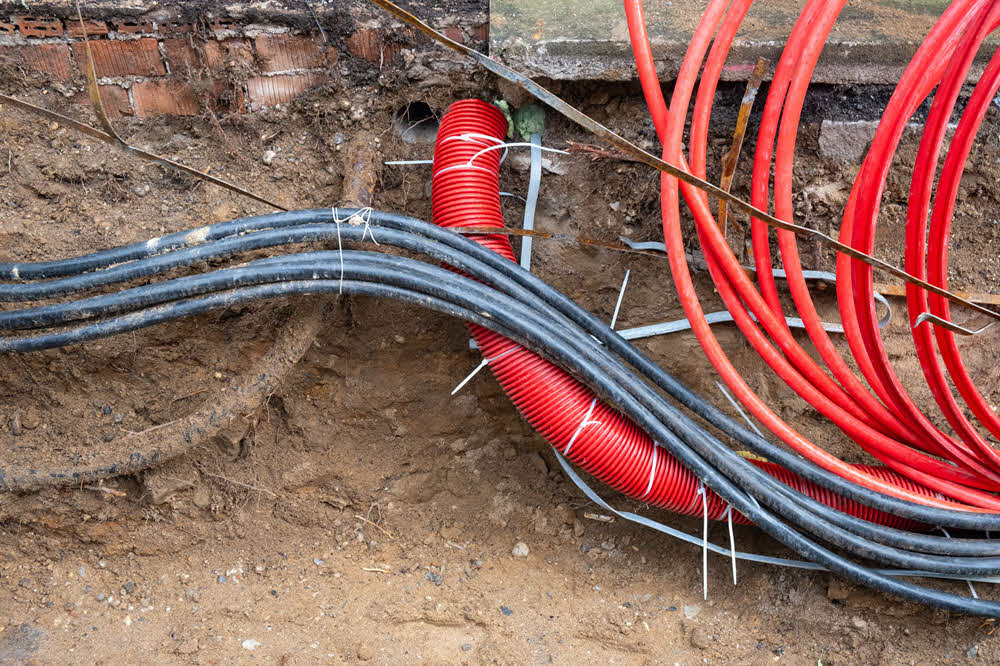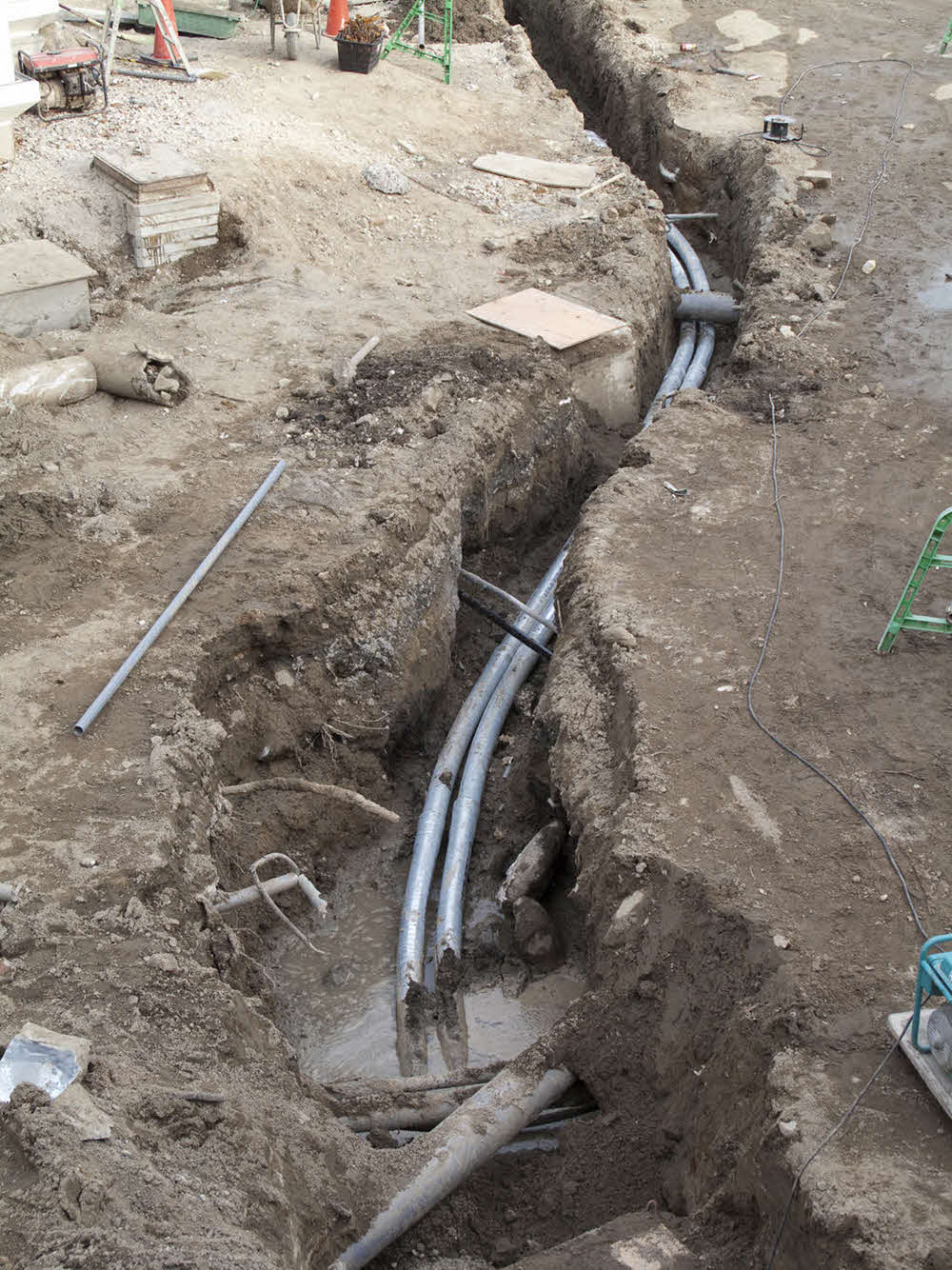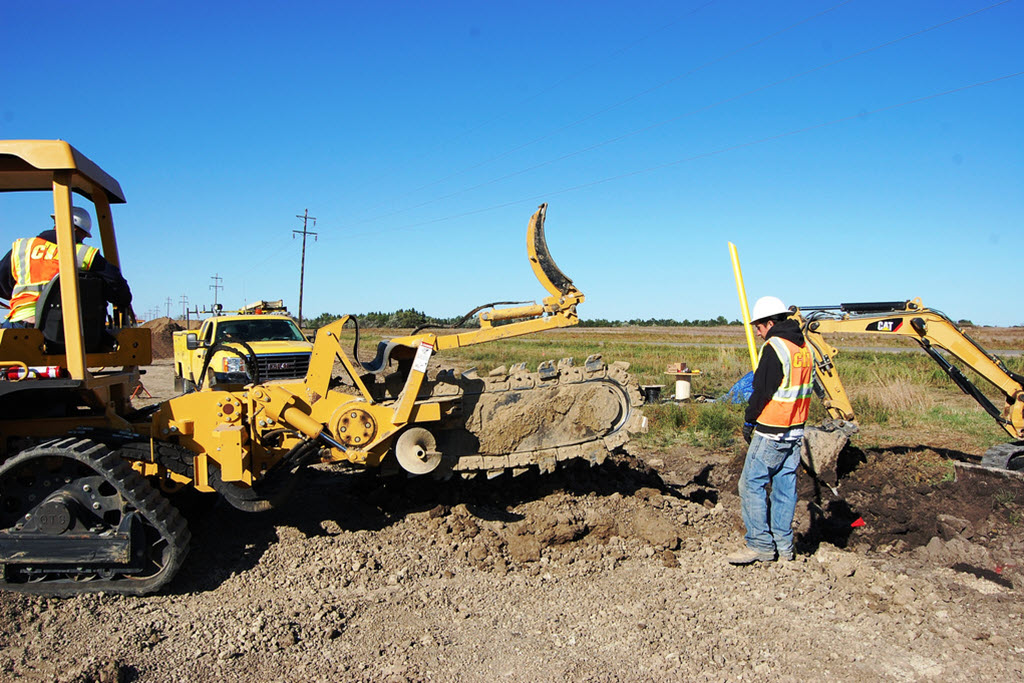Electrical Conduit Servicesin Rochester MI
Expert Conduit Installation to Support Electrical and Data Systems
We Are Locally Owned & Operated For Over 37 Years
Contact Us Today!
We Serve Businesses In And Around The Following Cities:
About Electrical Conduit Services
Understanding Electrical Underground Conduit in Commercial Properties
Ensuring the safety and security of a property, especially commercial real estates, is an absolute necessity in today’s dynamic world. One indispensable feature contributing to this essential aspect is the implementation of conduit for electrical underground. This comprehensive guide will take you through the intricate details of what an underground electrical conduit is, the process involved, and the potential benefits it can bring to your commercial properties in Rochester.
The Pertinence of Conduit for Electrical Underground
Electrical conduits refer to an integral system of tubes used to protect and route electrical wiring in a structure. Installing conduits underground, or underground conduit installation, is a practice that helps assure the safety and reliability of electrical wiring. Notably, it provides an added layer of protection against potential risks like accidental damage, environmental factors, and interference.
In Rochester, especially, where commercial spaces are prone to harsh weather conditions, the underground electrical conduit becomes a foremost consideration. Moreover, setting up electrical conduits underground is a significant step towards meeting stringent Rochester city building codes and standards.
Detailed Process of Conduit Installation Underground
Before undertaking any underground conduit installation, careful planning and surveying of the concerned property ought to be a priority. Once a route for running an underground electric line is optimally decided, the next stage involves trenching for the electrical conduit. This demanding task involves digging a trench in the ground, with the depth often contingent on local codes and the type of installation.
Post trenching, the conduit, usually PVC conduit for underground wiring, is placed within the trench. PVC conduit has widely been preferred for underground applications owing to its durability, resistance to corrosion, and ease of installation.
After installing the PVC conduit underground, the wiring is painstakingly threaded through the conduit using a fish tape. When running electrical wiring, care must be taken to avoid getting too close to other utility lines, notably the gas line. After successful wire installation, the trenches are filled back, and the surface area is restored.
The Remarkable Benefits associated with Underground Electrical Conduit
One primary benefit of underground conduit installation is the safeguard it provides to the electrical wiring from possible physical damage and tampering. Besides, the seamless appearance that arises from running electric lines underground promotes the aesthetic appeal of the commercial property.
Furthermore, an under-the-ground setup impressively helps in maintaining the integrity of the signal in the wiring system. Particularly when running an underground power to the house or any commercial property, interference from nearby power lines or appliances is considerably reduced, ensuring the smooth operation of your electrical system.
Bringing it to Life: Real-world Commercial Applications
Aptly illustrating the real-world application of conduit for electrical underground is D&J Contracting, a provider of an expansive range of professional installation services in Rochester. Through top-tier techniques of trenching for electrical conduit, they offer effective solutions especially tailored to protect commercial electrical systems.
At the heart of D&J Contracting’s service lies the skillful handling of your project: from surveying to final checks. Whether it is choosing the right PVC conduit for underground wiring or cautiously running an underground electrical service, their expert team manages all aspects. They also shine in managing the delicate task of running electrical wire near gas lines, ensuring robust safety.
Also, if you’re considering running wire in conduit underground from a main property to an ancillary building like a garage, D&J Contracting is up for the task. They follow guidelines and observe caution while running electrical lines to ensure the electric remained sealed with the help of a moisture-resistant conduit.
The electrical conduit trenching and installation provided by D&J Contracting effectively illustrates how businesses can leverage these services to enhance safety, reliability, and aesthetics of their commercial properties.
Embrace the Future of Electrical Infrastructure
Adopting conduit for electrical underground is undeniably a dependable approach to ensure maximum safety and reliability of your electrical system. As commercial property owners looking to optimize and safeguard your investments, considering this security practice is crucial, especially for Rochester’s challenging environment.
Whether you aim at running an underground electric line, installing a pvc conduit underground, or perhaps managing an electrical conduit trenching task, partnering with experts like D&J Contracting can help you navigate through these intricate matters with ease and proficiency.
Grounded in expertise and a profound understanding of local specifics, having an adept partner allows you to make informed decisions thereby enhancing security and safety whilst adhering to local regulations. If you’re yet to take the leap, it’s time to redefine your commercial property’s electrical system and jumpstart the transition towards a more secure, reliable, and compliant future.
Electrical Conduit Services Gallery


Call Us Today to receive your Free Quote for
Conduit For Electrical Underground in Rochester
Serving: Rochester, Michigan

About Rochester, Michigan
The Odawa, Ojibwe, Potawatomi and Wyandot peoples all resided in the Rochester area. All of them ceded land claims by the early 19th century. The first settlers in what would become Rochester, the Graham family, built a log cabin in 1817. The cabin was located on present-day 3rd St., just west of Main. The city was named for Rochester, New York, just like Rochester, Minnesota, as many early settlers to the area were formerly from the state of New York.
The city became an industrial center with abundant water power from the Clinton River and Paint Creek. The interconnected waterways are no longer used for travel or local industry, but provide natural beauty, some fishing, and a healthy portion of the Clinton Watershed. Historically, past industries formerly located in Rochester included a refinery for sugar beets, a paper products company, and the Western Knitting Mills factory, which was later adapted and utilized during World War II for incendiary production—businesses that no longer exist in the area. Rochester was served by two railroads as well as the Detroit United Railway, an interurban to Royal Oak and Detroit.
Chapman Mill Pond, east of downtown, disappeared into the Paint Creek when the dam broke during the flood of 1946. The reclaimed land is the site of the current post office, Rochester Hills library, and Olde Towne Road. Water Street, formerly situated at the edge of the large pond, remains by its name a reminder of the pond’s former existence.
Michigan became the 26th state in 1837, and the Village of Rochester was formed on April 12, 1869, within the boundaries of Avon Township. By 1895, Rochester’s population was 900. The village became the city of Rochester in 1967, breaking away from Avon Township. Avon Township became the City of Rochester Hills in 1984, following a long court battle, where the city of Rochester annexed 2.2 square miles (5.7 km) of Avon Township’s land. It more than doubled the city of Rochester’s size.
According to the United States Census Bureau, the city has a total area of 3.82 square miles (9.89 km), all land.
Since an annexation of a section of Avon Township (now Rochester Hills), the city has an eastern boundary that extends to the border with Macomb County.
| Census | Pop. | Note | %± |
|---|---|---|---|
| 1880 | 996 | — | |
| 1890 | 900 | −9.6% | |
| 1900 | 1,535 | 70.6% | |
| 1910 | 1,516 | −1.2% | |
| 1920 | 2,549 | 68.1% | |
| 1930 | 3,554 | 39.4% | |
| 1940 | 3,759 | 5.8% | |
| 1950 | 4,279 | 13.8% | |
| 1960 | 5,431 | 26.9% | |
| 1970 | 7,054 | 29.9% | |
| 1980 | 7,203 | 2.1% | |
| 1990 | 7,130 | −1.0% | |
| 2000 | 10,467 | 46.8% | |
| 2010 | 12,711 | 21.4% | |
| 2020 | 13,035 | 2.5% | |
| U.S. Decennial Census | |||
As of 2000 the median income for a household in the city was $65,179, and the median income for a family was $92,078. Males had a median income of $62,486 versus $37,107 for females. The per capita income for the city was $36,989. About 0.6% of families and 2.7% of the population were below the poverty line, including 1.0% of those under age 18 and 5.9% of those age 65 or over.
As of the census of 2010, there were 12,711 people, 5,514 households, and 3,195 families residing in the city. The population density was 3,318.8 inhabitants per square mile (1,281.4/km). There were 5,994 housing units at an average density of 1,565.0 per square mile (604.2/km). The racial makeup of the city was 88.6% White, 3.7% African American, 0.2% Native American, 5.5% Asian, 0.6% from other races, and 1.5% from two or more races. Hispanic or Latino of any race were 2.7% of the population.
There were 5,514 households, of which 30.9% had children under the age of 18 living with them, 47.3% were married couples living together, 7.7% had a female householder with no husband present, 2.9% had a male householder with no wife present, and 42.1% were non-families. 35.5% of all households were made up of individuals, and 8.8% had someone living alone who was 65 years of age or older. The average household size was 2.31 and the average family size was 3.09.
The median age in the city was 38.3 years. 25.1% of residents were under the age of 18; 7.6% were between the ages of 18 and 24; 29.4% were from 25 to 44; 26.4% were from 45 to 64; and 11.5% were 65 years of age or older. The gender makeup of the city was 48.0% male and 52.0% female.
The city of Rochester is governed by a seven-member city council and its mayor. City policy is then administered by a full-time city manager. The government provides full city services, including police, fire and water/sewer services, similar to many other communities in north Oakland County.
The city contracts with neighboring Rochester Hills for public library services for the city’s residents.
Rochester is served by Rochester Community Schools, whose boundaries completely encompass the city. A majority of the residents are zoned to Stoney Creek High School, with a small part of the west side of the city instead zoned to Rochester High School. Both high schools are located in Rochester Hills.
Oakland University, while geographically split between the cities of Rochester Hills and Auburn Hills, has maintained a Rochester mailing address since its inception in 1958. The main campus buildings are located in the nearby but not adjacent city of Auburn Hills.
Call Us Today to receive your Free Quote for
Conduit For Electrical Underground in Rochester
Related Services in Rochester, Michigan
We Serve Businesses In The Following Zip Codes:
48007, 48015, 48021, 48026, 48035, 48036, 48038, 48042, 48043, 48044, 48045, 48046, 48047, 48048, 48050, 48051, 48066, 48071, 48080, 48081, 48082, 48083, 48084, 48085, 48088, 48089, 48090, 48091, 48092, 48093, 48098, 48099, 48225, 48230, 48236, 48310, 48311, 48312, 48313, 48314, 48315, 48316, 48317, 48318, 48397